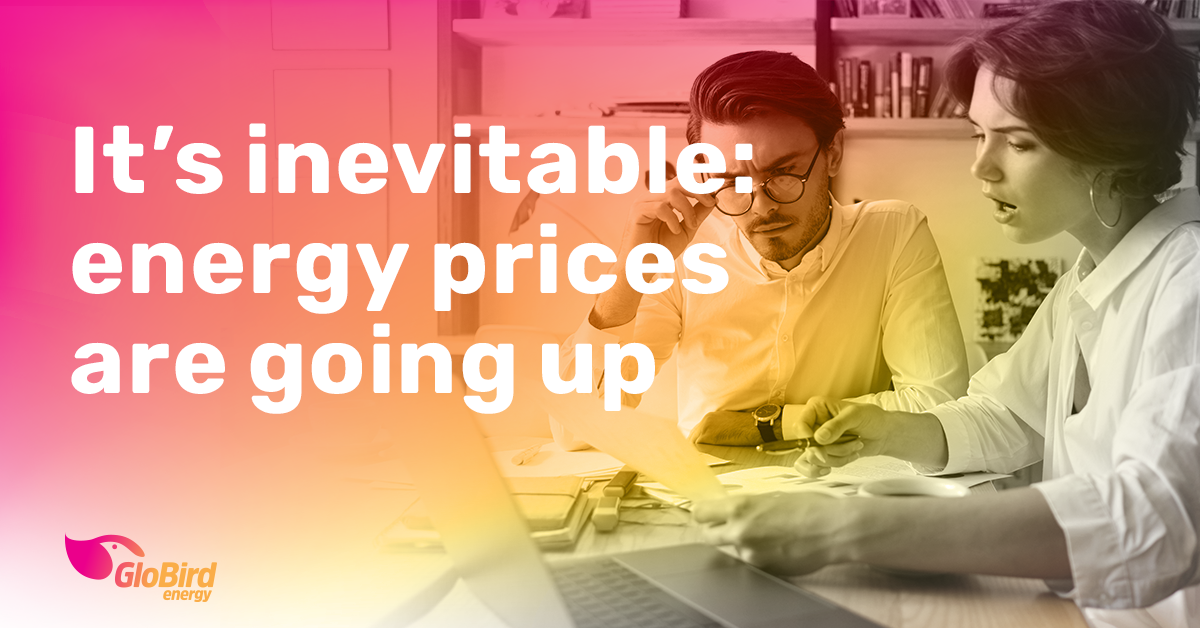Nobody likes it. Lots of people – including politicians and regulators – are talking about it. The plans to do something about it are still just plans. And we feel bad even just raising the subject.
However, unfortunately, there’s nothing we can do to change it, so we simply have to face facts: Australian energy prices are going to keep going up for a while yet.
There are many contributing factors, not least Russia’s invasion of Ukraine.
As the World Economic Forum puts it:
Price volatility, supply shortages, security issues and economic uncertainty have contributed to what the International Energy Agency (IEA) is calling “the first truly global energy crisis, with impacts that will be felt for years to come”.
It’s all a bit deflating
Five years ago, after we’d digested the findings of the Victorian Government’s Thwaites Review and the initial reports from the Australian Competition and Consumer Commission (ACCC) Retail Electricity Pricing Inquiry, we wrote:
“We are optimistic that our leaders are highly motivated to find ways to put downward pressure on electricity prices, because there’s nothing else on the political and social agenda that’s more important to more Australians, and even the ongoing success of Australia as a first-world nation.”
While we weren’t expecting things to change overnight, back in 2017 there was obviously no way to foresee where we’d be in 2022. After all, who predicted a global pandemic?
At the same time, even some long-term climate change advocates have been shocked by the increased frequency and impact of extreme weather events over the past couple of years.
While we’re inclined to see things somewhere between “everything’s rosy” and “it’s all doom and gloom”, we conceded that it’s become much harder to be optimistic lately.
The plain facts are sobering
In its August Statement on Monetary Policy, the Reserve Bank of Australia (RBA) stated:
“Wholesale electricity prices in the National Electricity Market (NEM) have increased sharply over the past six months, to be around four to five times higher in June and July than at the start of the year.”
The RBA’s article Recent Developments in Energy Prices is an interesting and very matter-of-fact read, if you have a few minutes. If you don’t have the time (or inclination) to read it, we can’t blame you, but these two subheadings sum things up pretty well:
“A combination of factors has caused wholesale electricity prices to rise sharply”
and
“Higher wholesale prices will lead to higher prices for households and businesses”.
Treasurer Jim Chalmers tried to talk down the impact when he delivered his first Federal Budget last month.
Among the assumptions from Treasury on which the Budget was based was the expectation that “retail power prices will increase by an average of 20 per cent nationally in late 2022, and a further 30 per cent in 2023/24”.
In his Opening statement to the Economics Legislation Committee earlier this month, Secretary to the Treasury Dr Steven Kennedy noted:
“In the UK, electricity prices have already risen by 63 per cent, in the euro area by 53 per cent, and in the US by 27 per cent, compared to pre-pandemic levels. And prices are expected to rise further in these countries.”
And later added:
“The same dynamics that are flowing through global electricity prices are flowing through here in Australia albeit with a lag.”
We’re not completely helpless
While significant price rises are inevitable, as energy users we still have some control.
The most obvious is how much energy we use. It’s never made more economic sense to properly insulate and seal our homes, to ensure that any heating or cooling we do is maximised rather than wasted through leakage.
If you’re in a position to decide between using electricity or gas and not – for example, drying your washing on a clothesline rather than in a dryer, or having salad with your dinner a couple of nights a week instead of cooking vegetables – those are sensible decisions that add up over time.
It might be worth checking out this article we wrote last year: Something your kids can learn about at home: saving energy (and note there are links at the bottom to several other blog posts featuring energy-saving tips).
Then there’s the advantage of shifting the time of your energy consumption to take advantage of GloBird Energy’s Free Lunch.
To encourage more people to use energy when it’s not only cheaper but also more sustainable, we reward eligible Victorian households with two hours of free energy each day.
Between the hours of noon and 2 pm, residential customers with an eligible smart meter are charged an electricity usage rate of $0 for the standard usage circuits.
We’ve explained it all here Would you like to do something about the energy equation?.
We’ll do whatever we can but …
No matter what we or you do, the cost of energy is going up.
While GloBird remains fully committed to providing consumers with the most competitive deals for their electricity and gas that we possibly can, we have no option but to pass on rising costs to our customers.
But we promise that we will continue to do all we can to run lean, run smart, keep costs down, continue to offer the most competitive deals possible, and always put our customers first.
